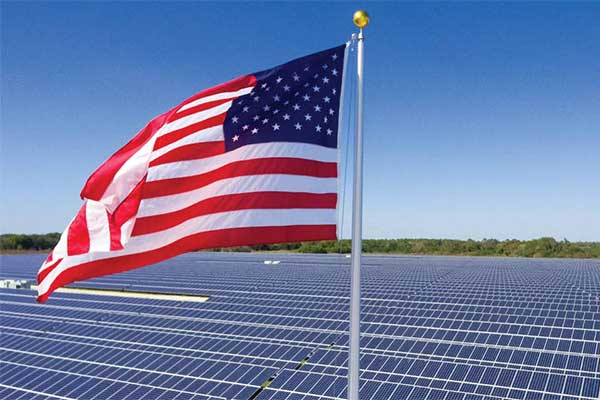- Renewable energy sources provided almost a quarter of the nation's electrical generation during the first two-thirds of 2022.
- Year-to-date, renewables have provided 23.3% of total U.S. electrical generation compared to 20.6% a year earlier.
- In the first eight months of 2022, renewable energy sources increased in electrical output by 17.5% compared to the same period a year earlier.
According to a review by the SUN DAY Campaign of data just released by the U.S. Energy Information Administration (EIA), renewable energy sources (i.e., biomass, geothermal, hydropower, solar, wind) provided almost a quarter of the nation’s electrical generation during the first two-thirds of 2022.
The latest issue of EIA’s “Electric Power Monthly” report (with data through August 31, 2022) reveals that in the first eight months of 2022, renewable energy sources (including small-scale solar systems) increased their electrical output by 17.5% compared to the same period a year earlier. Year-to-date, renewables have provided 23.3% of total U.S. electrical generation compared to 20.6% a year earlier.
Electrical generation by wind increased by 22.0% for the eight-month period and provided 10.0% of total electrical generation. Meanwhile, solar sources grew by 26.9% and provided 5.0% of the nation’s electrical output. In addition, generation by hydropower increased by 10.5% and accounted for 6.7% of the total. Geothermal also grew by 0.7%, while electrical generation, attributed to the combination of wood and other biomass, dropped by 2.1%.
Taken together, during the first two-thirds of 2022, renewable energy sources comfortably out-produced both coal and nuclear power by 17.9% and 32.3%, respectively. In fact, over the past half-decade, renewables have moved from fourth into second place while relegating coal and nuclear to third and fourth place.
Five years ago, coal’s share of the nation’s electrical generation was 30.3%, while that of nuclear power was 19.6%. Now, their respective shares have dropped to 19.8% and 17.6%. Meanwhile, renewables’ share has expanded from 18.2% to 23.3%. Natural gas, however, has retained its lead (38.5%) among energy sources comprising the U.S. electrical mix.
“These latest statistics suggest that renewables may well be on track to surpass EIA’s forecast for renewables to provide 22% of U.S. electrical generation in 2022 and 24% in 2023, [2]” noted the SUN DAY Campaign’s executive director Ken Bossong. “Bolstered by the Inflation Reduction Act, renewables’ share could easily surpass 25% by the end of next year.”
—
This article was written by The SUN DAY Campaign.











Comments